After the sustainability of coronapists for bicycles in 2020, the arrival on French territory of Dutch crossroads in 2021 (Dutch Junction) raises many questions. The city of Pantin in Seine-Saint-Denis, a few turns from the pedals of Paris, is one of the first cities in Île-de-France to install this type of cycling facility in order to make cyclists safer when crossing major intersections.
What is a Dutch crossroads?
You may have encountered it without knowing what it was. Also called protected crossroads , it is an intersection composed of 2 rings. One inside for cars and the other on the outside reserved for bicycles.

The brightly colored cycle path (usually green) makes it possible to clearly identify the axis for bicycles. As for a children's play mat, these rings are delimited by dotted lines to reinforce their visual aspect.
If this may require some adaptation, the use of this type of cycle path is on the other hand much simpler than it seems. The design of the Dutch crossroads makes it possible to secure cyclists' routes by eliminating the blind spots that there may be on a classic roundabout or a crossroads.
The particularity of the Dutch crossroads makes it possible to offer priority to cyclists and pedestrians.
A more secure layout for bicycles
For fear of accidents, the roundabout is too often a dangerous crossroads for cycling . This new device, heir to the Covid-19 health crisis, makes it possible to streamline and secure traffic between motor vehicles and bicycles (and electric scooters on the way). But this protected crossroads intrigues many motorists and even pedestrians who do not necessarily know how to approach its operation.
Promote the circulation of bicycles on major roads
According to statistics, the number of cyclists counted on the main roads (departmental roads) have more than tripled in one year . This should even continue, thanks to the Mobility Orientation Law (LOM) combined with the return of sunny days.

More and more people want to travel on two-wheelers in order to do without their large vehicle and promote social distancing . But to convert as many people as possible to cycling, the route must still be suitable for cycling .
A request from cyclists to feel safe
Safety is a huge axis to promote the practice of electric bikes or electric scooters. Following the sustainability of more than 170 km of cycle paths in Île-de-France since 2020, the increase in the number of cyclists on the roads proves that there is a strong demand .
The road adapts to the new flow of bicycle traffic
After decades of favoring the automobile, large cities must drastically reduce their greenhouse gas emissions . It is therefore important to arrange the roadway for bicycles . It is important, given the increasing influx of cyclists, that they can coexist with motorists.

How to take a Dutch crossroads by bike?
Always at the forefront when it comes to favoring cyclists, the Netherlands has had this type of arrangement that has effectively protected bicycles in urban areas for several years.
Here is how this new generation cycle path works, which helps to reduce conflicts between the car and the bike as much as possible:
Nothing could be simpler for the cyclist. By bike on the Dutch crossroads, you have the right of way on the colored track .
And if the cars have to let you pass, they will necessarily have you in their line of sight. The design of this intersection reduces the risk of accidents by eliminating blind spots in the car.

How to take a Dutch intersection by car?
For the motorist, on the other hand, this requires a certain period of adaptation. Because with the speed and the many markings on the ground, it can be off-putting at first sight. but still it is necessary to put good will there.
Motorists at this intersection protecting cyclists and pedestrians must indeed give way to them. The operation then consists of following the rules of the roundabout.
The motor vehicle stops at the first dotted line before the cycle path, then once in its traffic circle, the motorist if he wishes to go straight or turn left must stop at the following dotted lines to let the other vehicles turn. coming from the right.
To exit the ring, once again he must give priority to ecomobility solutions if these cut the intersection. In all cases, the automobile is required to slow down sharply in this intersection. This makes it possible to avoid a good number of accidents with a better visibility of the traffic which surrounds it.

Conclusion
In order to convert people to soft mobility while promoting social distancing, Ile-de-France via the various departmental councils aim to make 100% of departmental roads safe to cycle by 2024. combined with the extension of Low Emission Zones ( ZFE ), this should make crossing our municipalities more pleasant for urban travel for the good of all.


5 comments
Dance
Très belle photo , mais les doubles chevrons, réservés aux accotements carrossables des chaussées à voies centrale banalisée (CVCB ou chaucidou ) , ne doivent pas figurer sur une bande cyclable ou ne doivent figurer que les silhouettes de cycliste
Yann de Weebot
Bonjour Zozo,
Merci pour la précision de l’information ! Effectivement si dans le cas de Pantin les feux ont été conservé, le fonctionnement n’est pas tout à fait pareil.
zozo
Attention. Votre article part de l’exemple de Pantin, or le carrefour est toujours gérés par des feux., contrairement à ce qui se passe aux Pays-Bas. Les priorités s’appliquent donc une fois que les feux ont été respectés.
Pierre
Très beau article. C’est claire ! Merci Weebot.
ZephyrFan2021
Merci beaucoup !!
Personne n’en parle et c’est pourtant si important !